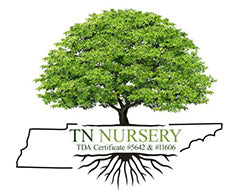

















About Flowering Shrubs
Flowering shrubs bring many advantages to landscapes, making them a cherished asset for gardeners and homeowners alike. These versatile plants offer a combination of beauty and utility that elevates outdoor spaces' overall appeal and functionality.
First and foremost, they enhance the aesthetic charm of any landscape. Their vibrant and varied blossoms create a stunning visual display, adding color, texture, and fragrance to the environment. Whether you favor the delicate petals of roses, the cheerful blooms of azaleas, or the elegant simplicity of hydrangeas, there is a flowering shrub to suit every taste and style. They can transform ordinary yards into enchanting gardens, providing a constantly changing backdrop of colors and shapes throughout the seasons.
Moreover, their appeal extends beyond their visual allure. These plants offer an ever-evolving display of seasonal interest, ensuring your landscape remains engaging year-round. From the exuberant burst of life in spring and summer to the rich tapestry of autumn foliage, flowering shrubs evolve with the seasons, providing new dimensions of beauty as the year progresses. Even in winter, when most plants are dormant, some shrubs maintain their structural integrity and add architectural interest to your landscape.
Flowering Shrubs Are Vital For Pollinators
One of their often-overlooked advantages is their role in promoting biodiversity. Many of these shrubs produce nectar-rich flowers and berries that attract a wide range of wildlife, including pollinators like bees and butterflies. Inviting these beneficial insects into your garden is vital in helping ecosystems and ensuring the health of the broader environment. Additionally, the berries and shelter provided by these shrubs make them a haven for birds and small mammals, contributing to the overall diversity of your landscape.
Beyond their ecological significance, they also serve practical purposes in landscaping. They can be strategically planted to create natural privacy screens, shielding your outdoor space from prying eyes or unwanted noise. This natural alternative to fences or walls adds an organic, harmonious element to your garden and provides a functional solution to enhance your outdoor living experience.
They are a versatile and valuable addition to any landscape. They improve the visual allure of your outdoor space, offer year-round interest, support biodiversity, and serve practical purposes such as privacy screening. With their myriad benefits, they are an investment that pays off in beauty and functionality, making them a cherished component of any well-designed landscape.

